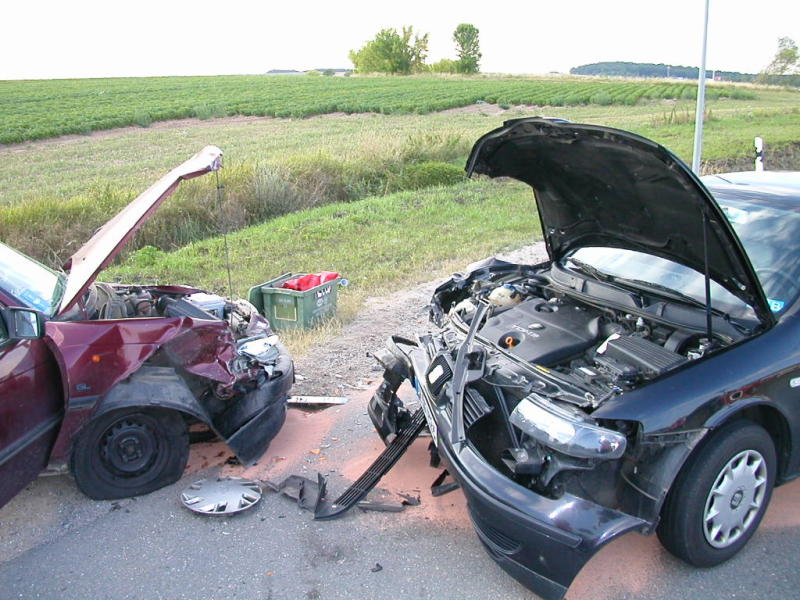A head-on collision happens when the front end of a vehicle meets the front end of another vehicle. These types of collisions are among the most dangerous and often result in death due to the speed and force of both vehicles involved.
While your chances of surviving a head-on collision are low, they are better than they used to be. Car manufactures have put in various safety devices such as airbags, shoulder harnesses, crumple zones and shatter resistant windshields which have helped. Unfortunately, however, restraints and airbags can stop your body, but they cannot stop your brain and other internal organs from moving due to the forces of impact.
The most common types of injuries stemming from a head-on collision include whiplash, neck injuries, abdominal injuries, spinal cord injuries, head trauma, chest injury, foot/leg injuries and traumatic brain injury.
Whiplash occurs when the head and neck continue moving forward even after the vehicles have collided and then are “whipped” back. This causes strain on the ligaments and muscles in the neck and shoulders. Some symptoms include pain, headaches, dizziness, stiffness and numbness.
Neck injuries are the most frequent disabling injuries in car accidents. Almost a third of all these types of injuries are caused by head-on collisions.
Abdominal injuries are common in head-on and side impact collisions. The liver and spleen are the most vulnerable to injury along with the kidneys and diaphragm.
Spinal cord injuries occur when the force of the head-on collision travels up the spine and causes injury. These injuries may be herniated discs, nerve damage and/or cracked vertebra. Victims of these types of injuries may be paralyzed depending on the severity and speed of the crash.
In a head-on collision, the head is thrown back and forward which can result in a concussion. If the head hits the steering wheel the damage can be even worse. Air bags have reduced the risk of head trauma overall, however skull fractures and brain injury can still occur.
Chest injuries can be caused by the force of the seatbelt, the body smashing into the steering wheel, the force of the air bag, or another type of blunt trauma. This force can break ribs or even damage the lungs.
Lower extremity injuries such as foot and leg injuries are also common in head-on collisions. Since the legs and feet are the first to be affected in a frontal collision, they often absorb much of the impact. Legs and knees also strike with the instrument panel causing further damage. Lower extremity injuries can include torn ACL, torn PCL, broken bones, and crushed legs.
Statistics have shown that 7 out of 9 head-on collisions occur in the lane closest to the median. While driving it is best to travel in the far-right lane so that you can pull over more easily if you see a vehicle traveling towards you in your lane. Always stay alert- do not drive distracted and NEVER drive under the influence of drugs or alcohol.
Chelsie M. Lamie is a personal injury attorney in Safety Harbor, Florida. If you or a loved one have been injured in a car accident, call 727-501-3464 for a free consultation. You can also learn more about Attorney Lamie by visiting www.chelsielamie.com.

